How to achieve sustainable garden landscaping – 5 expert ideas you need for a more eco-friendly space
How to make greener choices when it comes to landscaping your yard
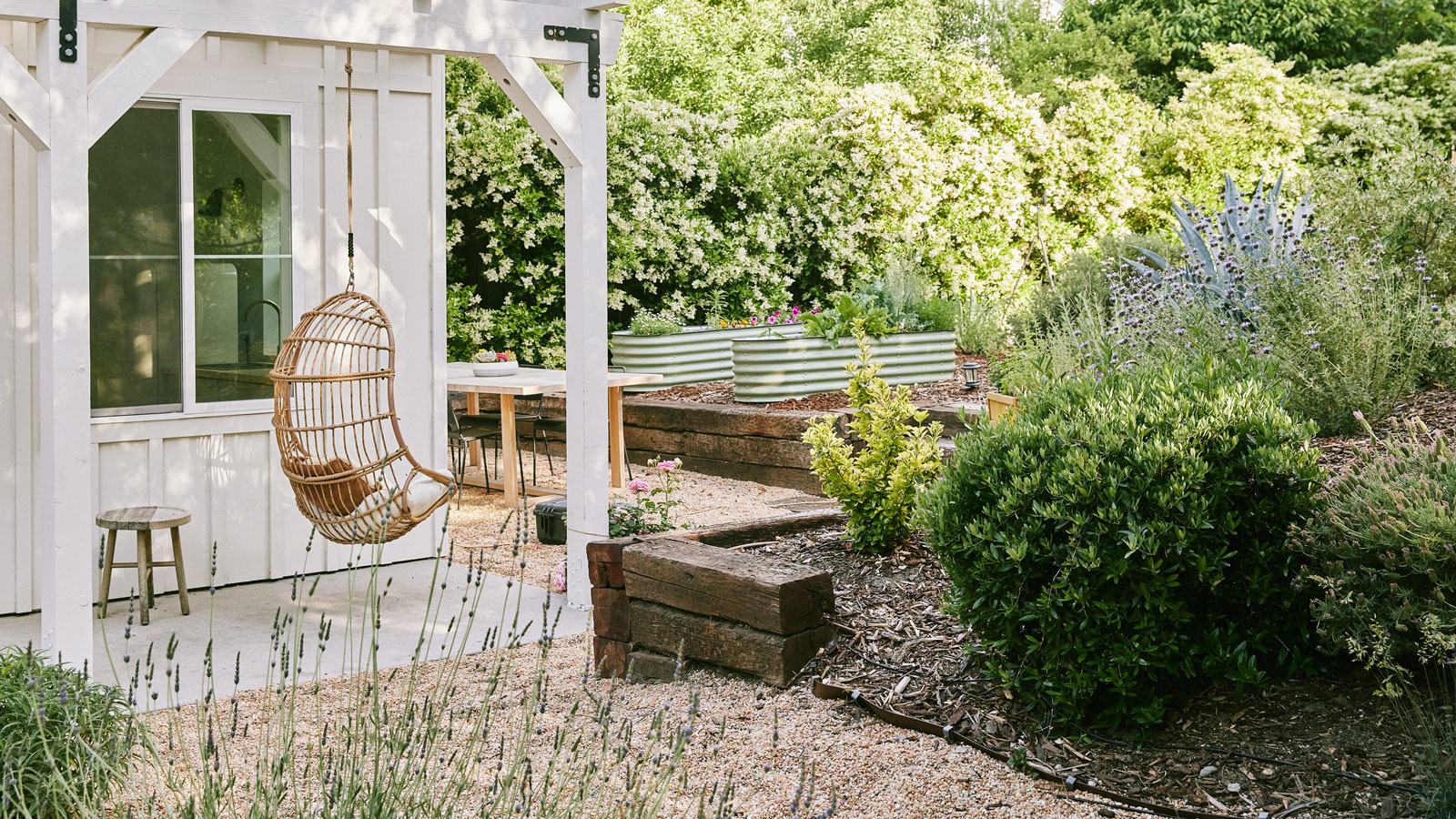

Landscaping ideas for sustainable gardens are fast becoming high priority for many. If you've already embraced concepts like making your own mulch, growing native plants and harvesting rainwater, you are probably already looking into sustainable landscaping materials.
Used wisely, these not only create an aesthetically pleasing (and often more affordable) look, but are good for the planet too as part of your efforts to create an eco-friendly garden. Hardscaping materials can have a detrimental effect on the environment with their high carbon emissions. But the good news is there are plenty of sustainable alternatives too.
A sustainably designed garden can still have patios, paths and other hardscapes. It's just a case of sourcing materials responsibly as well as working with what you already have in the garden. To start making a difference, dive into our expert-led ideas for sustainable garden landscaping.
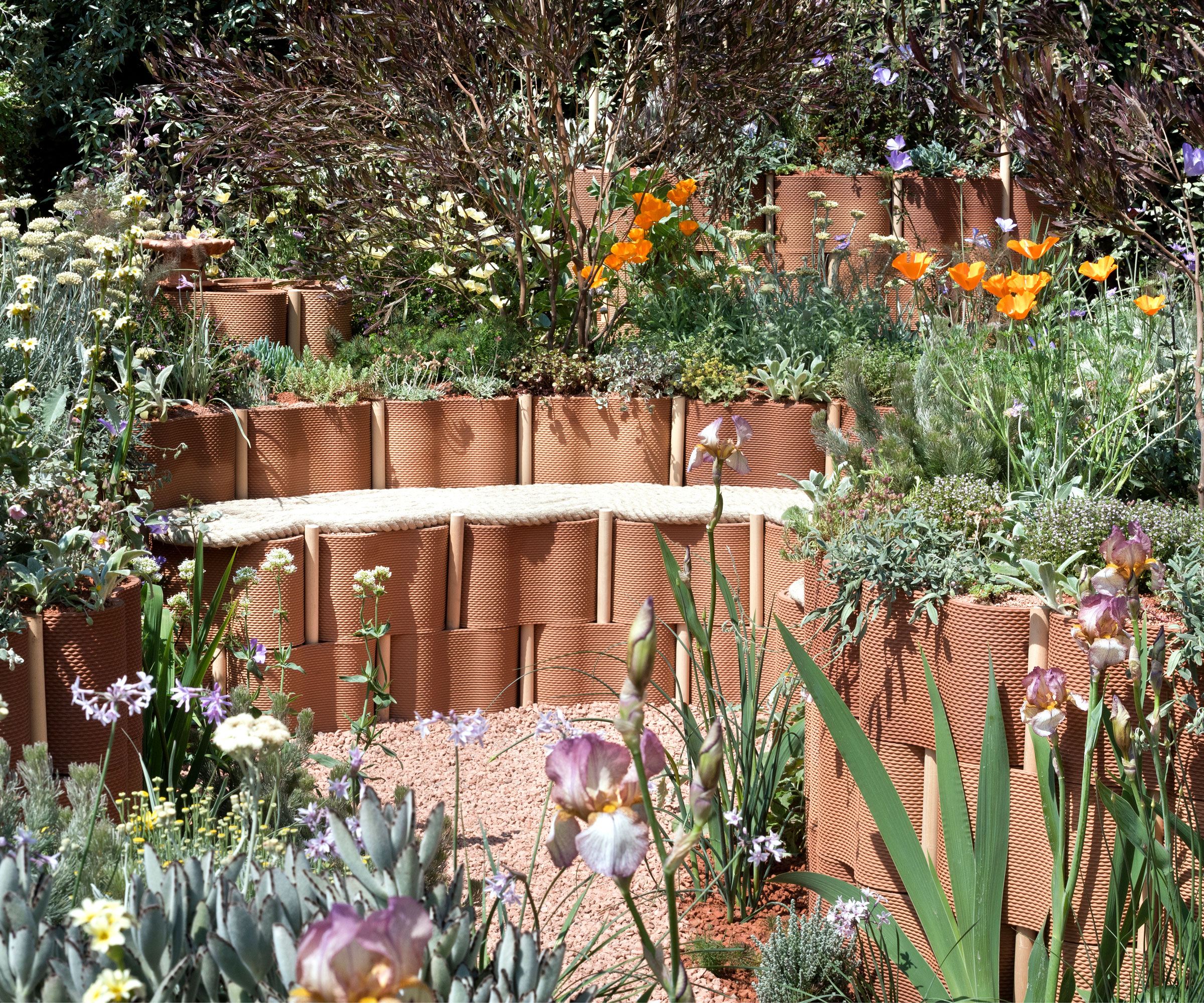
This sustainable garden design features perforated clay blocks, gravel and resilient planting to create raised beds and seating areas
5 of the best sustainable garden landscaping ideas
'Sustainability in the garden stretches beyond just the planting and envelops the choices of hard-landscaping materials and methods of construction, together with how the garden is managed and maintained,' according to leading landscape designers Rosemary Alexander and Rachel Myers, co-authors of landscaping bible The Essential Garden Design Workbook. 'Respect for the site is fundamental to the doctrine of sustainability.'
Sourcing landscaping materials locally helps lower the high carbon cost of transportation. Using reclaimed materials from salvage yards also ticks the sustainability box, as well as giving your garden a unique look that’s difficult to achieve with new materials. And making as many surfaces as possible permeable goes a long way towards achieving sustainable garden landscaping too.

Rosemary Alexander is founder and principal of the English Gardening School, a talented garden designer, and a skillful educator. In the UK, she is a trustee of the Great Dixter Charitable Trust and judges regularly for the Royal Horticultural Society. She is well known on the international lecture circuit.

Rachel Myers is a landscaping expert specialising in small garden design. She has designed gardens in France, Belgium, and Colombia. At the English Gardening School, Rachel lectures on both garden design and practical horticulture diploma courses. Her work has been featured in numerous books and magazines.
1. Opt for sustainable pavers
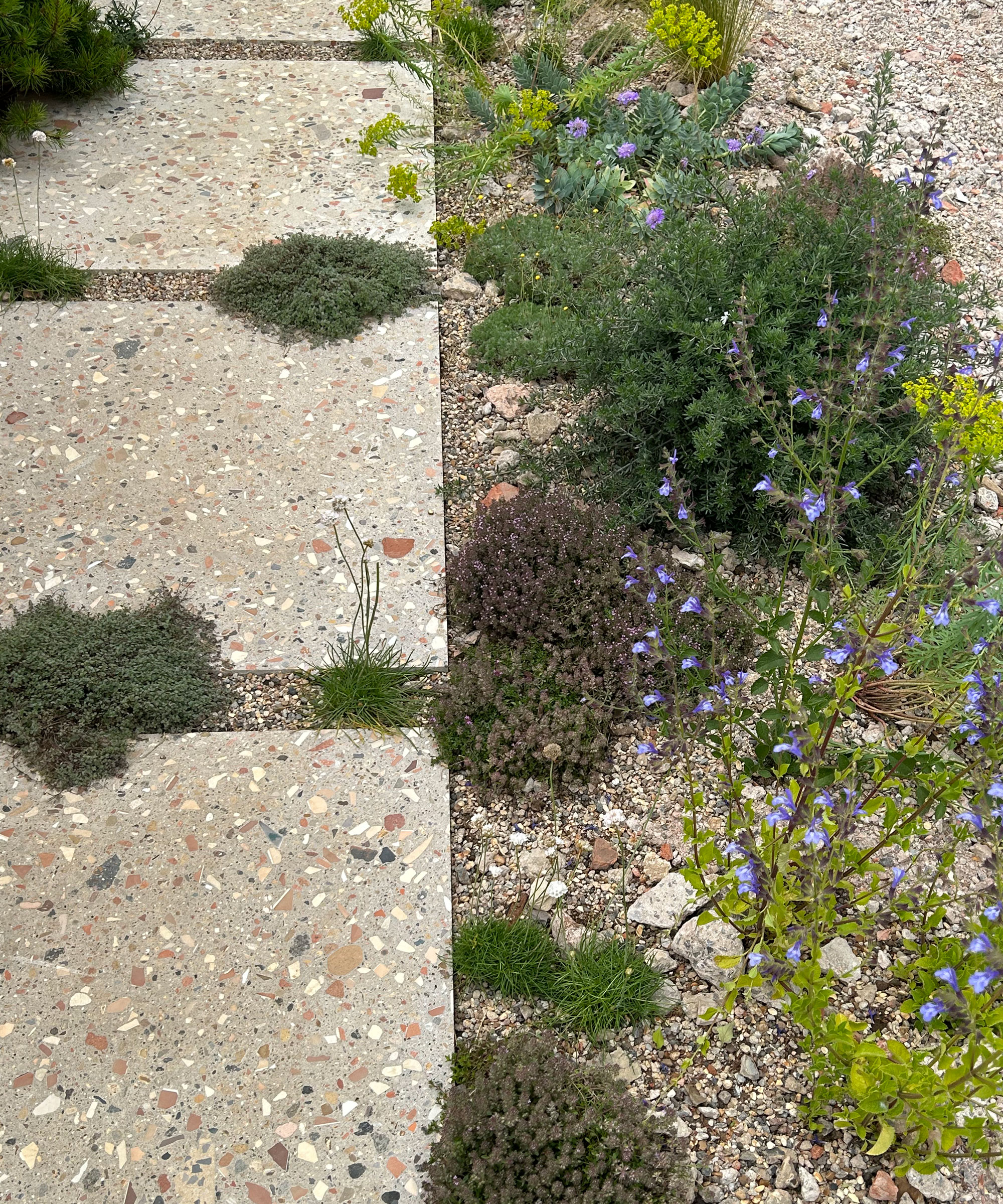
These eco-friendly paving slabs are made from crushed construction waste, set in a cement-free binder and polished to create a terrazzo-like effect.
Landscaping ideas for surfaces that allow water to seep into the ground, to slow the flow into drains and waterways, are trending. From a design perspective, permeable surfaces add a much softer element. But these materials don't just look good, they are beneficial to the environment too.
'Sustainability is a major focus for homeowners, especially Millennials and Gen Z,' says landscaping expert Joe Raboine. 'People are looking for eco-friendly options to incorporate into their outdoor spaces to ensure that they aren’t negatively impacting their natural environment.'
Design expertise in your inbox – from inspiring decorating ideas and beautiful celebrity homes to practical gardening advice and shopping round-ups.
Joe suggests using permeable pavers, or permeable interlocking concrete pavements (PICP). 'Permeable pavers are a sustainable hardscaping solution. They are installed with layers of varying-sized stone or aggregates underneath that filter and direct stormwater to underground aquifers, mimicking the way natural land absorbs water.'
Permeable pavers are installed with more gaps to allow stormwater runoff to drain more effectively and are available in a variety of styles and designs. 'When these are installed, any rain that falls on your outdoor space seeps back into the ground, reducing the burden on storm drains,' explains Joe. 'These can even be installed to harvest and recycle rainwater.'
How you use hard landscaping really matters. Large expanses of paving reflect heat, adding to the 'heat island' effect in cities. The porous nature of permeable surfaces helps ground water to flow between open spaces in the materials and soak away naturally.
Flexible, plastic porous pavers are another option. 'Ours have a 92% void space, which enables a drainage rate of up to 38.5 inches per square foot per hour while also supporting stunning landscapes,' says green infrastructure and stormwater expert Olivia Harris. 'The porous pavers are made from 100% recycled plastic and have a longer service life than alternative paving options, which adds to the sustainability factor.'

In his current role, Joe strives to promote the idea that outdoor living is not only a good investment for homeowners but can also fundamentally change lives for the better by bringing people together. Joe started his career as a contractor over 25 years ago.

Olivia Harris is the president of Invisible Structures, a leading designer and manufacturer of porous paving and stormwater management solutions based in Denver, Colorado.
2. Choose recycled composite decking

Composite decking is a fantastic eco alternative as it diverts waste from landfills and reduces the demand for new timber
Use composite decking as an eco-friendly alternative to wooden decking. Made from a mixture of wood fibres and recycled plastic, it's weatherproof, durable and cost effective. Composite decking looks almost identical to timber, with the bonus it comes in a wide range of colors and textures.
'For today’s increasingly eco-conscious homeowners, sustainability is no longer a ‘nice-to-have’ but rather a meaningful requirement in the selections they make for their homes,' says sustainable landscaping expert Leslie Adkins. 'Equally important are materials that are easy to maintain without requiring a lot of time, effort and expense.'
Composite decking is also is one of the best options for longevity. Made from a mix of wood and polyethylene plastic film, it's incredibly longest-lasting. Real wood will eventually rot and need replacing, especially if it's built on a wooden frame, whereas composite decking is in for the long haul, making it an absolutely sustainable choice.
What's more, style isn’t compromised for performance. Composite decking no longer looks artificial. 'Featuring high-definition wood grain patterns and rich, saturated colors, today’s composite decking looks and feels more natural than ever before,' says Leslie. 'Color options range from deep earth tones to spicy reds and pristine greys, including tropically inspired boards that feature the distinct streaked look of exotic hardwoods.'

Leslie Adkins is the group vice president of marketing and ESG development at Trex Company, a leading brand of outdoor living products. She has extensive expertise related to outdoor design trends, along with planning and building dream outdoor spaces.
3. Repurpose reclaimed wood for garden landscaping projects
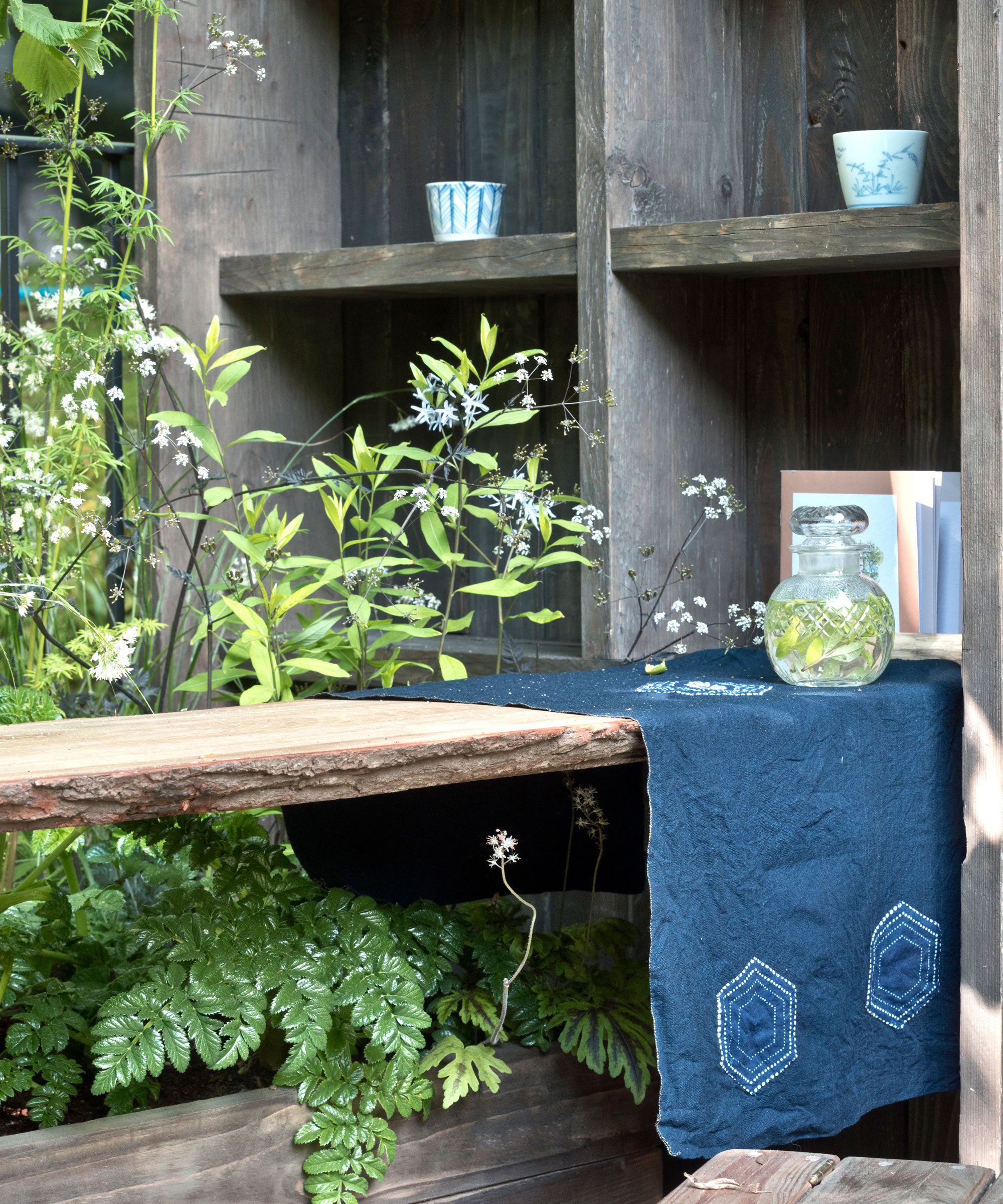
Salvaged wood looks great, adding something unique to your outdoor space
Another great option as part of your sustainable garden landscaping ideas is to source reclaimed wood to repurpose for garden projects. This is generally salvaged from old buildings, barns and salvage yards, but you can also find it on Craigslist and Facebook Marketplace.
'When you hear the term reclaimed wood, you might picture a stack of wide weathered boards pulled from the sides of a historic barn from the 1800s,' says Carrie Spalding, founder of Lovelyetc and author of Wood Plank Projects, available on Amazon. 'If you are ever lucky enough to find wood like that at a reasonable price, snatch it up!'
Reclaimed wood is really just a fancy term for any wood that has been used before, points out Carrie. 'The wood has already served a purpose, and now, instead of tossing it, you are giving it a new function.' This can include pallet wood, old fence boards, and old decking boards.
You can repurpose it to make garden furniture, pergolas, raised beds and even garden steps if you're landscaping in a garden where you want to connect different levels. It can also be used for bigger projects like decking and fencing.
The naturally weathered finish will add so much character to your garden projects. Beautifully aged reclaimed wood will enhance your outdoor space as well as offering a more mindful approach to your landscaping ideas.
Using reclaimed wood also means there is less demand for new timber, which helps to preserve precious woods and forests. It reduces the environmental impact of logging and transportation too, so it's definitely a win on the sustainable garden landscaping front.
While reclaimed wood is tough and durable, it still requires proper maintenance to withstand outdoor conditions. Regular sealing and protection from harsh weather are essential to ensure longevity.

Carrie Spalding discovered the power of DIY when she moved into a 1970s brick ranch in massive need of updating, which she transformed into a beautiful haven for her family. She shares her DIY adventures and triumphs on her blog LovelyEtc.com. Carrie lives in Roanoke, Virginia.
4. Try landscaping with natural stone
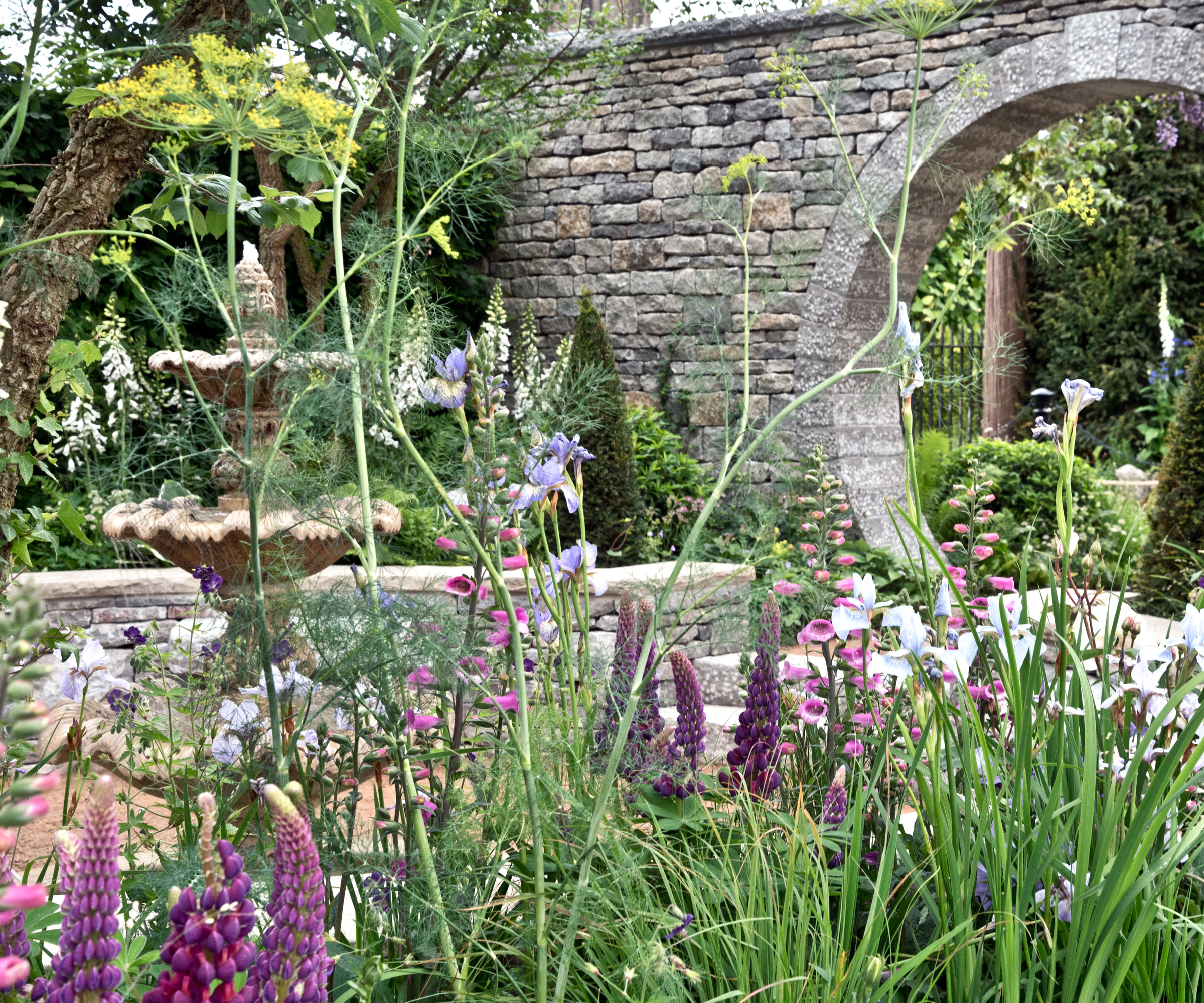
Use natural stone for big projects like walls or for smaller ideas like stepping stone paths
The look and character of natural stone adds a unique rustic element to your hardscape that is both beautiful and sustainable.
Opt for locally sourced natural stone and you will minimise the carbon footprint when it comes to transportation. In addition, natural stone doesn't go through a manufacturing process, unlike concrete or brick, making it a more sustainable choice.
Look close to home to source natural stone by seeing what's available in your local area. There is usually a good range of colors and textures, with sandstone and limestone popular choices. Remember that the environmental cost of imported stone is high, due to it being transported across the globe.
You can use natural stone for a range of sustainable garden landscaping ideas to connect different areas and make your design feel cohesive. Create a flag-stoned patio, for example, with a curved retaining wall to make it feel more intimate. Try a winding stepping stone path so the natural curves complement the stone flags. Or plant small plugs of Irish moss in between the steppers that will spread and soften the hardscape with a green element.
If your garden is on different levels add terraced beds with stone retaining walls to increase your growing area and utilise a previously dead space. This type of project is perfect for a stepped vegetable garden or cutting garden. Remember to include generous 'landings' for easy access.
You can also use rustic stone edgers to delineate flowerbeds or water features. Or go large and think about adding a stone bench to your yard.
5. Make gravel your go-to choice
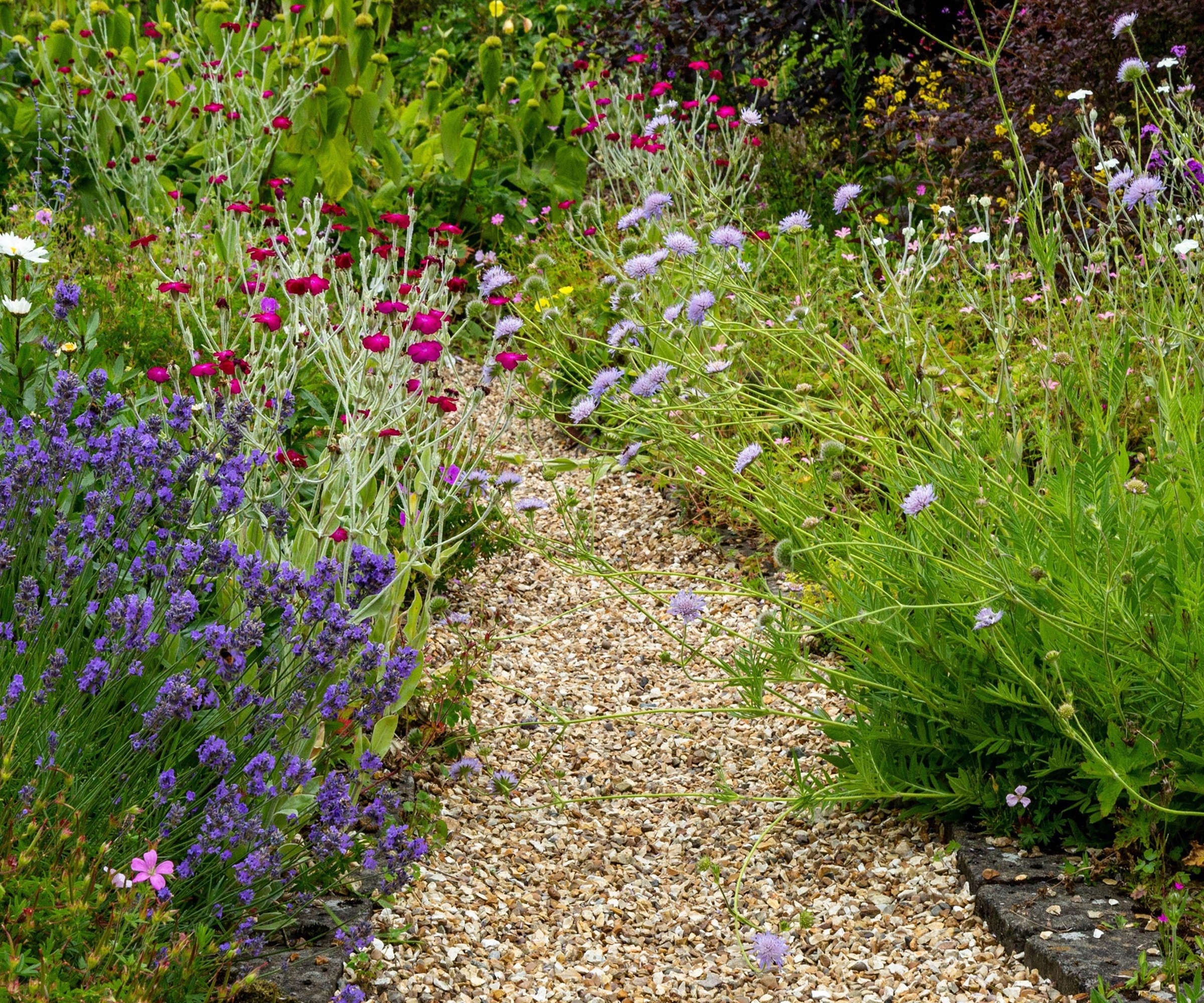
This curving path design featuring immersive planting adds a sense of anticipation to the landscape
One of the most popular and consistent themes in sustainable garden landscaping is to ensure as many surfaces as possible are permeable. To achieve this try landscaping with gravel ideas as this is the go-to material in terms of both looking good and affordability, whatever your garden style.
Gravel is a good choice for redesigns and bigger projects such as if you're considering a dry garden or xeriscaping project, as well as for designing a drought-tolerant yard that's both sustainable and beautiful. Meanwhile pea gravel path ideas are one of the quickest and easiest ways to introduce this versatile material into your yard.
On a smaller scale you can always take out a paver here and there, replacing them with pockets of gravel that are loosely planted up with perennial ground covers like creeping thyme to soften and green up larger areas of hardscape. Or use as a landscaping material around water features instead of paving them.
FAQs
What is cork mulch and is it sustainable?
Cork mulch is a great choice for sustainable garden landscaping. It’s lightweight, retains moisture well, and slowly breaks down, adding nutrients back into the soil. In addition to this it prevents soil erosion, is 100% recyclable and looks good too.
Cork is an eco-friendly, sustainable material. It comes from the bark of the cork oak tree (Quercus suber), which is how it gets its name. It's harvested without harming the tree, and the bark regenerates, making the cork a renewable resource. In fact, cork harvesting is one of the most sustainable forestry practices in the world.
Use it on flower beds to hold in moisture, prevent weeds and protect plants, as well as creating a smart, uniform surface that gives bare soil a 'landscaped' look.
Use sustainable garden landscaping if you're interested in landscaping with succulents and cacti too, as well as landscaping with rocks ideas – rocks are of course another hardscaping material that's eco friendly.

Lifestyle journalist Sarah Wilson writes about garden design and landscaping trends for Homes & Gardens. She has studied introductory garden and landscape design, and also has an RHS Level 2 qualification in the Principles of Plant Growth and Development. She is a regular contributor to Homes & Gardens and Livingetc. She has also written for Country Living, Country Homes & Interiors, and Modern Gardens magazines